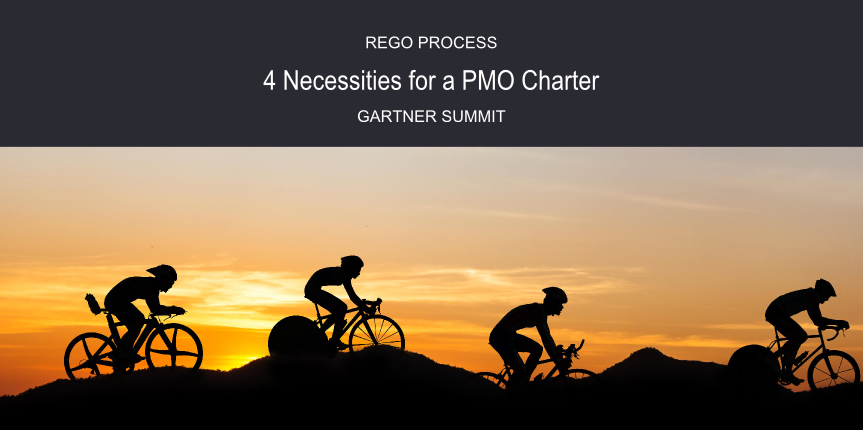You’re invested in Clarity PPM (CA PPM), and you want to drive results, but some end-users don’t consistently participate, which makes the company’s data quality hard to rely on. You need a comprehensive strategy to get company-wide Clarity PPM adoption.
8 Comprehensive Clarity PPM Adoption Strategies
For Clarity PPM to give you complete and accurate data, you need consistent usage. Our best results, at Rego Consulting, come from implementing a comprehensive strategy that includes eight components:
- Obtain Executive Support
- Be Prepared
- Implement an Effective Information Campaign
- Invest in Training and Mentoring
- Engage the Users – Provide Real Value
- Avoid Perfectionism
- Release Functionality in Stride
- Monitor Performance with Metrics
Maybe you skipped right to the last component, Monitor Performance with Metrics, and thought, “Yes! That will solve our problem!” But before we get to that powerful strategy, make sure you’ve spent time providing the structural support.
Obtain Executive Support for Clarity PPM Adoption
Naturally, you need executive support. Individuals in leadership can’t simply back the process and the tool, they must be vocal about backing it and communicating to the organization that Clarity PPM is high priority. Without vocal support, the commitment to your new PPM process isn’t clear, so make sure your message comes across.
Be Prepared for Clarity PPM Adoption
It’s impossible to implement any PPM tool without solid processes in place. Part of being prepared means your processes are well-defined, so your users know how and when to use the tool.
Implement an Effective Information Campaign for Clarity PPM Adoption
Once your tactical processes are known, you must give your company the information they’re missing, including Why We’re Doing This! The more fun you have with your campaign, the better. Internal marketing can take the form of giveaways, posters, messages on television screens, etc. Make it shine.
Invest in Training & Mentoring for Clarity PPM Adoption
Whenever you deploy any process or tool, training is a critical part. The more complicated the process or tool, the more mentoring is important. Beware of simple instructional documents. When you put your end users in a conference room and actually walk them through processes, we’ve found it’s one of the best ways to increase adoption. And after the event is over, make the training and mentoring ongoing. Employ brown bag sessions, so your users can participate and ask questions.
Engage the Users – Provide Real Value for Clarity PPM Adoption
One mistake we’ve seen a lot of executives make is deploying their PPM solution unilaterally. You really want to engage the people who will be using the tool, so you can get their buy-in and make sure they’ll adopt the process. This means finding out their pain points and trying to solve them. Read about three quick steps you can take in our Adoption Quick Guide, part 3.
Avoid Perfectionism to Increase User Clarity PPM Adoption
We can’t say it enough, don’t be a perfectionist. You are never going to get 100% automation. You’ll do best when you focus on the 80% of the people you can win over.
Release Functionality in Stride When You Adopt Clarity PPM
This really ties in well with our point about not being a perfectionist. You shouldn’t try to boil the ocean and start with everything at once. It won’t work. Focus on small things that add value to executives and end users. Start with quick-wins. Then build. It’s incredibly hard to build on despair, but it’s very easy to build on a solid reputation. Automate a task. People will love using it; they’re getting value. Executives get reporting, and then you can stride forward to your next small thing.
Monitor Performance with Metrics When You Adopt Clarity PPM
So far, our adoption techniques have all led to the most important element: using metrics to monitor performance. This is when you monitor what’s going on within the tool and make sure the data is complete, in order to get compliance from your end-users. We’ll talk about three strategies for monitoring performance with metrics in an upcoming post.
Have you implemented any of these strategies? What worked for you? Where did you struggle? We’d love to hear your thoughts in the comments below.
If you liked this post, check out this BrightTALK from Daniel Greer, President of Rego Consulting, our Adoption Quick Guide, and stay tuned for our next post: "Clarity PPM: Monitoring Performance with Metrics.” Join our mailing list below.










